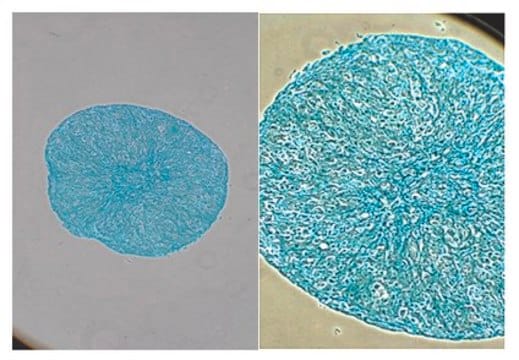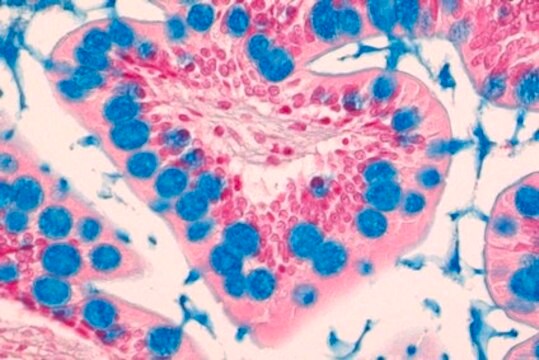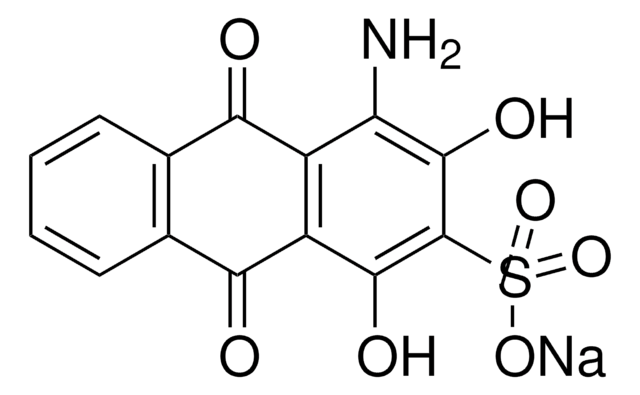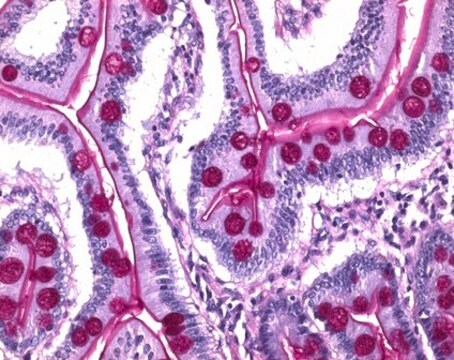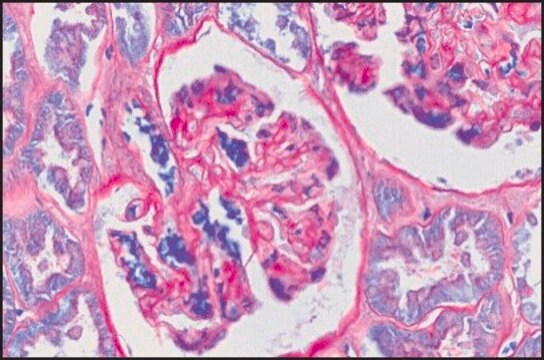B8438
Alcian Blue solution
1% in 3% acetic acid, pH 2.5
Synonyme(s) :
Alcian Blue 8XG solution
About This Item
Produits recommandés
Forme
liquid
Niveau de qualité
Concentration
1% in 3% acetic acid, pH 2.5
Technique(s)
microbe id | staining: suitable
Couleur
dark blue to very dark blue
Plage de pH
2.4-2.6
Amax
0.45-0.60 (1:400 in H2O)
Application(s)
diagnostic assay manufacturing
hematology
histology
Température de stockage
room temp
Application
Actions biochimiques/physiologiques
Code de la classe de stockage
12 - Non Combustible Liquids
Classe de danger pour l'eau (WGK)
WGK 2
Point d'éclair (°F)
Not applicable
Point d'éclair (°C)
Not applicable
Certificats d'analyse (COA)
Recherchez un Certificats d'analyse (COA) en saisissant le numéro de lot du produit. Les numéros de lot figurent sur l'étiquette du produit après les mots "Lot" ou "Batch".
Déjà en possession de ce produit ?
Retrouvez la documentation relative aux produits que vous avez récemment achetés dans la Bibliothèque de documents.
Les clients ont également consulté
Notre équipe de scientifiques dispose d'une expérience dans tous les secteurs de la recherche, notamment en sciences de la vie, science des matériaux, synthèse chimique, chromatographie, analyse et dans de nombreux autres domaines..
Contacter notre Service technique
